Yes, she is the golden goose who laid the golden cosmic egg, and she is also the golden calf of the slaughtered by heretic Moses (king Akhenaten) Israelites. Atenism, the Aten religion, the Amarna religion, or the "Amarna heresy" was a religion and the religious changes associated with the ancient Egyptian Eighteenth Dynasty pharaoh Akhenaten.
The religion centered on the cult of the god Aten, light worship, depicted as the disc of the Sun and originally an aspect of the traditional solar deity Ra. In the 14th century BC, actually most likely in the 9th century BC (~840 BC) according to Emmanuel Velikovsky's revised timeline, Atenism was Egypt's state religion for about 20 years, before subsequent rulers returned to the traditional polytheistic religion and the pharaohs associated with Atenism were erased from Egyptian records. More at: https://en.m.wikipedia.org/wiki/Atenism
VIRGIN MOTHER GODDESS
Mut, also known as Maut and Mout, was a mother goddess worshipped in ancient Egypt. Her name means mother in the ancient Egyptian language. Mut had many different aspects and attributes that changed and evolved a lot over the thousands of years of ancient Egyptian culture.
Mut was considered a primal deity, associated with the primordial waters of Nu from which everything in the world was born. Mut was sometimes said to have given birth to the world through parthenogenesis, but more often she was said to have a husband, the solar creator god Amun-Ra.
THE HOLY TRINITY
Although Mut was believed by her followers to be the mother of everything in the world, she was particularly associated as the mother of the lunar child god Khonsu. At the Temple of Karnak in Egypt's capital city of Thebes, the family of Amun-Ra, Mut and Khonsu were worshipped together as the Theban Triad.
NEITH (GODDESS OF ALL MOTHERS)
Neith /ˈniː.ɪθ/ (Koinē Greek: Νηΐθ, a borrowing of the Demotic form Ancient Egyptian: nt, likely originally to have been nrt "she is the terrifying one"; Coptic: ⲛⲏⲓⲧ, also spelled Nit, Net, or Neit) was an early ancient Egyptian deity. She was said to be the first and the prime creator, who created the universe and all it contains, and that she governs how it functions. She was the goddess of the cosmos, fate, wisdom, water, rivers, mothers, childbirth, hunting, weaving, and war.
Neith is a far more complex goddess than is generally known, however, and of whom ancient texts only hint of her true nature. A religious silence was imposed by ancient Egyptians for secrecy, employing euphemisms and allusions and often relying on symbols alone. In her usual representations, she is portrayed as a fierce deity, a woman wearing the Red Crown, occasionally holding or using the bow and arrow, in others, a harpoon. Neith also is a goddess of war and of hunting and that is the symbolism depicted most often.
Her symbol was two arrows crossed over a shield. In fact, the hieroglyphs of her name usually are followed by a determinative containing the archery elements, with the shield symbol of the name being explained as either double bows (facing one another), intersected by two arrows (usually lashed to the bows), or, by other imagery associated with her worship.
Her symbol also identified the city of Sais.This symbol was displayed on top of her head in Egyptian art. In her form as a goddess of war, she was said to make the weapons of warriors and to guard their bodies when they died.
As a deity, Neith is normally shown carrying the was scepter (symbol of rule and power) and the ankh (symbol of life). She is called such cosmic epithets as the "Cow of Heaven", a sky-goddess similar to Nut, and as the Great Flood, Mehet-Weret, as a cow who gives birth to the sun daily. In these forms, she is associated with the creation of both the primeval time and the daily "re-creation". As protectress of the Royal House, she is represented as a uraeus, and functions with the fiery fury of the sun. In time, this led to her being considered as the personification of the primordial waters of creation. She is identified as a great mother goddess in this role as a creator. She is the personification of the primeval waters, able to give birth (create) parthenogenetically.
Later, as religious practices evolved throughout the long history of their culture, ancient Egyptians began to note their deities in pairs, female and male. When that tradition arose, Neith was paired with Ptah-Nun. In the same manner, her personification as the primeval waters is Mehet-Weret, conceptualized as streaming water, related to another use of the verb sti, meaning 'to pour'.
Neith is one of the most ancient deities associated with ancient Egyptian culture. Flinders Petrie (Diopolis Parva, 1901) noted the earliest depictions of her standards were known in predynastic periods, as can be seen from a representation of a barque bearing her crossed arrow standards in the Predynastic Period, as is displayed in the Ashmolean Museum, Oxford.
Her first anthropomorphic representations occur in the early dynastic period, on a diorite vase of King Ny-Netjer of the Second Dynasty. The vase was found in the Step Pyramid of Djoser (Third Dynasty) at Saqqara. That her worship predominated the early dynastic periods is demonstrated by a preponderance of theophoric names (personal names that incorporate the name of a deity) within which Neith appears as an element. Predominance of Neith's name in nearly forty percent of early dynastic names, and particularly in the names of four royal women of the First Dynasty, clearly emphasizes the importance of this goddess in relation to the early society of Egypt, with special emphasis on association with the Royal House.
In the very early periods of Egyptian history, the main iconographic representations of this goddess appear to have been limited to her hunting and war characteristics, although there is no Egyptian mythological reference to support the concept that this was her primary function as a deity. It has been suggested these hunting and war features of Neith's imagery may indicate her origin from Libya, located west and southwest of Egypt, where she was the goddess of the combative peoples there.
It has been theorized that Neith's primary cult point in the Old Kingdom was established in Saïs (modern Sa el-Hagar) by Hor-Aha of the First Dynasty, in an effort to placate the residents of Lower Egypt by the ruler of the unified country. Textual and iconographic evidence indicates that she was a national goddess for Old Kingdom Egypt, with her own sanctuary in Memphis, indicating the high regard held for her. There, she was known as "North of her Wall", as counterpoise to Ptah's "South of his Wall" epithet.
While Neith is generally regarded as a deity of Lower Egypt, her worship was not consistently located in that delta region. Her cult reached its height in Saïs and apparently in Memphis in the Old Kingdom, and remained important, although to a lesser extent, through the Middle and New Kingdom. Her cult regained cultural prominence again during the twenty-sixth dynasty when worship at Saïs flourished again, as well as at Esna in Upper Egypt.
Neith's symbol and part of her hieroglyph also bore a resemblance to a loom, and so in later syncretisation of Egyptian myths by the Greek ruling class of that time, she also became the goddess of weaving. At this time her role as a creator was conflated with that of Athena, as a Greek deity who wove all of the world and existence into being on her loom.
Sometimes Neith was pictured as a woman nursing a baby crocodile, and she then was addressed with the title, "Nurse of Crocodiles", reflecting a southern provincial mythology in Upper Egypt that she served as either the mother of the crocodile god, Sobek. As the mother of Ra, in her Mehet-Weret form, she was sometimes described as the "Great Cow who gave birth to Ra".
As a maternal figure (beyond being the birth-mother of the sun-god Ra), Neith is associated with Sobek as her son (as early as the Pyramid Texts), but in later religious conventions that paired deities, no male deity is consistently identified with her in a pair and so, she often is represented without one. Later triad associations made with her have little or no religious or mythological supporting references, appearing to have been made by political or regional associations only.
Some modern writers assert that they may interpret that as her being 'androgynous', since Neith is the creator capable of giving birth without a partner (asexually) and without association of creation with sexual imagery, as seen in the myths of Atum and other creator deitie. However, her name always appears as feminine. Erik Hornung interprets that in the Eleventh Hour of the Book of the Amduat, Neith's name appears written with a phallus (Das Amduat, Teil I: Text: 188, No. 800.(Äg. Abh., Band 7, Wiesbaden) 1963).
In reference to Neith's function as creator with both male and female characteristics, Peter Kaplony has said in the Lexikon der Ägyptologie: "Die Deutung von Neith als Njt "Verneinung" ist sekundär. Neith ist die weibliche Entsprechung zu Nw(w), dem Gott der Urflut (Nun and Naunet). (Citing Sethe, Amun, § 139)". LÄ II: 1118 (Harassowitz, Wiesbaden, 1977).
The antiquity of Neith reaches deeply into the prehistoric periods, however, when female deities as the sole creators (through parthenogenesis) were quite common in human cultures (and even into the neolithic), so she should be considered in that role, without having to reach for other explanations about her not following later conventions.
She was considered to be eldest of the Ancient Egyptian deities. Neith is said to have been "born the first, in the time when as yet there had been no birth" (St. Clair, Creation Records: 176).
In the Pyramid Texts, Neith is paired with the goddess Selket as the two braces for the sky, which places these goddesses as the supports for the heavens (see PT 1040a-d, following J. Gwyn Griffths, The Conflict of Horus and Seth, (London, 1961) p. 1). This ties in with the vignette in the Contendings of Seth and Horus when, as the most ancient among them, Neith is asked by the deities to decide who should rule.
She was appealed to as an arbiter in the dispute between Horus and Seth. In her message of reply, Neith selects Horus, and says she will "cause the sky to crash to the earth" if he is not selected. More at: https://en.m.wikipedia.org/wiki/Neith
MOTHER MUT MYTHOLOGY
Mut was the consort of Amun, the patron deity of pharaohs during the Middle Kingdom (c. 2055–1650 BC) and New Kingdom (c. 1550–1070 BC). Amaunet and Wosret may have been Amun's consorts early in Egyptian history, but Mut, who did not appear in texts or art until the late Middle Kingdom, displaced them. In the New Kingdom, Amun and Mut were the patron deities of Thebes, a major city in Upper Egypt, and formed a cultic triad with their son, Khonsu. Her other major role was as a lioness deity, an Upper Egyptian counterpart to the fearsome Lower Egyptian goddess Sekhmet.
DEPICTIONS
In art, Mut was pictured as a woman with the wings of a Vulture, holding an ankh, wearing the united crown of Upper and Lower Egypt and a dress of bright red or blue, with the feather of the goddess Ma'at at her feet.
Alternatively, as a result of her assimilations, Mut is sometimes depicted as a cobra, a cat, a cow, or as a lioness as well as the vulture.
Before the end of the New Kingdom almost all images of female figures wearing the Double Crown of Upper and Lower Egypt were depictions of the goddess Mut, here labeled "Lady of Heaven, Mistress of All the Gods". The last image on this page shows the goddess's facial features which mark this as a work made sometime between late Dynasty XVIII and relatively early in the reign of Ramesses II (c. 1279–1213 BC). More at: https://en.m.wikipedia.org/wiki/Mut
AMUNET
Amunet (/ˈæməˌnɛt/) or Imnt (The Hidden One in hieroglyphics); also spelled Amonet or Amaunet; Koinē Greek: Αμαυνι) is a primordial goddess in ancient Egyptian religion. Thebes was the center of her worship through the last dynasty, the Ptolemaic Kingdom, in 30 BC. She is attested in the earliest known of Egyptian religious texts and, as was the custom, was paired with a counterpart who is entitled with the same name, but in the masculine, Amun. They were thought to have existed prior to the beginning of creation along with three other couples representing primeval concept and forming Ogdoad, the original primordial Gods and Goddesses of infinite hidden dark abyss, Greek Chaos. More at: https://en.m.wikipedia.org/wiki/Amunet
WOSRET
She was Amun's first wife (John Ray calls her "the theological equivalent of the girl next door"), and was replaced by Mut, although it is possible that Mut is simply a later name for Wosret.
HATHOR & HOLY COW
Hathor (Ancient Egyptian: ḥwt-ḥr, lit. 'House of Horus', Ancient Greek: Ἁθώρ Hathōr, Coptic: ϩⲁⲑⲱⲣ) was a major goddess in ancient Egyptian religion who played a wide variety of roles.
As a sky deity, she was the mother or consort of the sky god Horus and the sun god Ra, both of whom were connected with kingship, and thus she was the symbolic mother of their earthly representatives, the pharaohs. She was one of several goddesses who acted as the Eye of Ra, Ra's feminine counterpart, and in this form she had a vengeful aspect that protected him from his enemies.
Her beneficent side represented music, dance, joy, love, sexuality, and maternal care, and she acted as the consort of several male deities and the mother of their sons. These two aspects of the goddess exemplified the Egyptian conception of femininity. Hathor crossed boundaries between worlds, helping deceased souls in the transition to the afterlife.
Hathor was often depicted as a cow, symbolizing her maternal and celestial aspect, although her most common form was a woman wearing a headdress of cow horns and a sun disk. She could also be represented as a lioness, cobra, or sycamore tree.
Cattle goddesses similar to Hathor were portrayed in Egyptian art in the fourth millennium BC, but she may not have appeared until the Old Kingdom (c. 2686–2181 BC). With the patronage of Old Kingdom rulers she became one of Egypt's most important deities. More temples were dedicated to her than to any other goddess; her most prominent temple was Dendera in Upper Egypt.
She was also worshipped in the temples of her male consorts. The Egyptians connected her with foreign lands such as Nubia and Canaan and their valuable goods, such as incense and semiprecious stones, and some of the peoples in those lands adopted her worship. In Egypt, she was one of the deities commonly invoked in private prayers and votive offerings, particularly by women desiring children.
During the New Kingdom (c. 1550–1070 BC), goddesses such as Mut and Isis encroached on Hathor's position in royal ideology, but she remained one of the most widely worshipped deities. After the end of the New Kingdom, Hathor was increasingly overshadowed by Isis, but she continued to be venerated until the extinction of ancient Egyptian religion in the early centuries AD.
APIS BULL
Bull worship was common in many cultures. In Egypt, whence according to the Exodus narrative the Hebrews had recently come, the Apis Bull was a comparable object of worship, which some believe the Hebrews were reviving in the wilderness; alternatively, some believe Yahweh, the national god of the Israelites, was associated with or pictured as a calf/bull deity through the process of religious assimilation and syncretism. Among the Canaanites, some of whom would become the Israelites, the bull was widely worshipped as the Lunar Bull and as the creature of El.
THE GOLDEN CALF FIASCO
When Moses went up into Mount Sinai to receive the Ten Commandments (Exodus 24:12–18), he left the Israelites for forty days and nights. The Israelites feared that he would not return and demanded that Aaron make them "a god to go before them". Aaron gathered up the Israelites' golden earrings and ornaments, constructed a "molten calf" and they declared: "'This is thy god, O Israel, which brought thee up out of the land of Egypt." (Exodus 32:1–4)
Aaron built an altar before the calf and proclaimed the next day to be a feast to the LORD. So they rose up early the next day and "offered burnt-offerings, and brought peace-offerings; and the people sat down to eat and to drink, and rose up to play." (Exodus 32:6)
Lord God told Moses what the Israelites were up to back in camp, that they had turned aside quickly out of the way which Lord God commanded them and he was going to destroy them and start a new people from Moses. Moses besought and pleaded that they should be spared and "the LORD repented of the evil which He said He would do unto His people." (Exodus 32:11–14)
So, let's recap. According to the biblical narrative, the Lord God of Israel Yahweh (light) which Moses Akhenaten started to worship back in Egypt, aka the Amarna heresy, wanted to destroy the Israelites who were worshipping the golden calf while Moses was away, yet Moses pleaded on behalf of his people for Lord God to forgive their transgressions and Lord God did forgive and it is he, Lord God himself, who admits to his plans of doing evil. OK. 8/
Now, what is the bloody problem with Moses? After pleading to Lord God to save his people and getting Lord God to repent and admit that he was about to go out all evil on Israel, then Moses right after that saving Grace goes down the mountain, sees the golden calf that the Lord God already told him about over which they had ample discussion, and goes berserk over it all of a sudden.
He then brakes the two tablets that Lord God gave him supposedly for safe delivery to his people, one of which, ironically, is 'Thy shalt not kill,' and then, as that wasn't enough, he goes on killing three thousand of innocent Israelites, completely the opposite of what Lord God wanted with his supposed repentance. Nice work there Moses, sarcastically of course, on behalf of his people, family and friends nonetheless, and the following Lord God's will.
Moses went down from the mountain, but upon seeing the calf, he became angry and threw down the two Tablets of Stone, breaking them. Moses burnt the golden calf in a fire, ground it to powder, scattered it on water, and forced the Israelites to drink it. When Moses asked him, Aaron admitted to collecting the gold, and throwing it into the fire, and said it came out as a calf. (Exodus 32:21–24)
Exclusion of the Levites and mass execution
The Bible records that the tribe of Levi did not worship the golden calf. "Moses stood in the gate of the camp, and said: 'Whosoever is on the LORD's side, let him come unto me.' And all the sons of Levi gathered themselves together unto him. And he said unto them: 'Thus saith the LORD, the God of Israel: Put ye every man his sword upon his thigh, and go to and fro from gate to gate throughout the camp, and slay every man his brother, and every man his companion, and every man his neighbour.' And the sons of Levi did according to the word of Moses; and there fell of the people that day about three thousand men." (Exodus 32:26–28)
Which means that Moses lied about Lord 's repentance from his wrath, if there was any, and contrary to Lord God's will of mercy and grace went on with murdering innocent people whose only transgression was offering their love and worship to God as they knew it coming out of Egypt where the holy cow was an ancient symbol of the top of their pantheon, as was discussed prior. Thus it makes sense that Lord God of Moses has forbidden him to enter the promised land, hence Moses died before reaching it, with Joshua from the tribe of Ephraim Joseph leading the Israelites there after.
Joshua is installed as Moses's successor, Moses delivers the law to the Levites (a priestly caste), and ascends Mount Nebo or Pisgah, where he dies and is buried by God.
CRITICISM & ALTERNATIVE VIEWS
According to modern scholarship, there are two versions of the Ten Commandments story, in E (Exodus 20) and J (Exodus 34), this gives some antiquity and there may be some original events serving as a basis to the stories. The Golden Calf story is only in the E version and a later editor added in an explanation that God made a second pair of tablets to give continuity to the J story. The actual Ten Commandments as given in Exodus 20 were also inserted by the redactor who combined the various sources. According to Michael Coogan, it seems that the golden calf was not an idol for another god, and thus a false god.
Importantly, there is a single calf in this narrative. While the people refer to it as representative of the "gods", this is a possessive form of the word Elohim (אֱלֹהֶיךָ elo'hecha, from אֱלֹהִים), which is a name of God as well as general word for "gods".
While a reference to singular god does not necessarily imply Yahweh worship, the word usually translated as 'lord' is Yahweh יהוה in the original, so at least it can't be ruled out. In the chronology of Exodus the commandment against the creation of graven images had not yet been given to the people when they pressed upon Aaron to help them make the calf, and that such behavior was not yet explicitly outlawed.
Another understanding of the golden calf narrative is that the calf was meant to be the pedestal of Yahweh. In Near Eastern art, gods were often depicted standing on an animal, rather than seated on a throne. This reading suggests that the golden calf was merely an alternative to the ark of the covenant or the cherubim upon which Yahweh was enthroned.
The reason for this complication may be understood as
a criticism of Aaron, as the founder of one priestly house that rivaled the priestly house of Moses, and/or
as "an attack on the northern kingdom of Israel." The second explanation relies on the "sin of Jeroboam," who was the first king of the northern kingdom, as the cause of the northern kingdom's fall to Assyria in 722 BCE. Jeroboam's "sin" was creating two calves of gold, and sending one to Bethel as a worship site in the south of the Kingdom, and the other to Dan as a worship site in the north, so that the people of the northern kingdom would not have to continue to go to Jerusalem to worship (see 1 Kings 12:26–30).
According to Coogan, this episode is part of the Deuteronomistic history, written in the southern Kingdom of Judah, after the fall of the northern kingdom, which was biased against the northern kingdom. Coogan maintains that Jeroboam was merely presenting an alternative to the cherubim of the Temple in Jerusalem, and that calves did not indicate non-Yahwehistic worship.
The documentary hypothesis can be used to further understand the layers of this narrative: it is plausible that the earliest story of the golden calf was preserved by E (Israel source) and originated in the Northern kingdom. When E and J (Judah source) were combined after the fall of northern kingdom, "the narrative was reworked to portray the northern kingdom in a negative light," and the worship of the calf was depicted as "polytheism, with the suggestion of a sexual orgy" (see Exodus 32:6). When compiling the narratives, P (a later Priest source from Jerusalem) may have minimized Aaron's guilt in the matter, but preserved the negativity associated with the calf.
Alternatively it could be said that there is no golden calf story in the J source, and if it is correct that the Jeroboam story was the original as stated by Friedman, then it is unlikely that the golden calf events as described in Exodus occurred at all. Friedman states that the smashing of the Ten Commandments by Moses when he beheld the worship of the golden calf, is really an attempt to cast into doubt the validity of Judah's central shrine, the Ark of the Covenant. "The author of E, in fashioning the golden calf story, attacked both the Israelite and Judean religious establishments."
As adoration of wealth
A metaphoric interpretation emphasizes the "gold" part of "golden calf" to criticize the pursuit of wealth. This usage can be found in Spanish where Mammon, the Gospel personification of idolatry of wealth, is not so current.
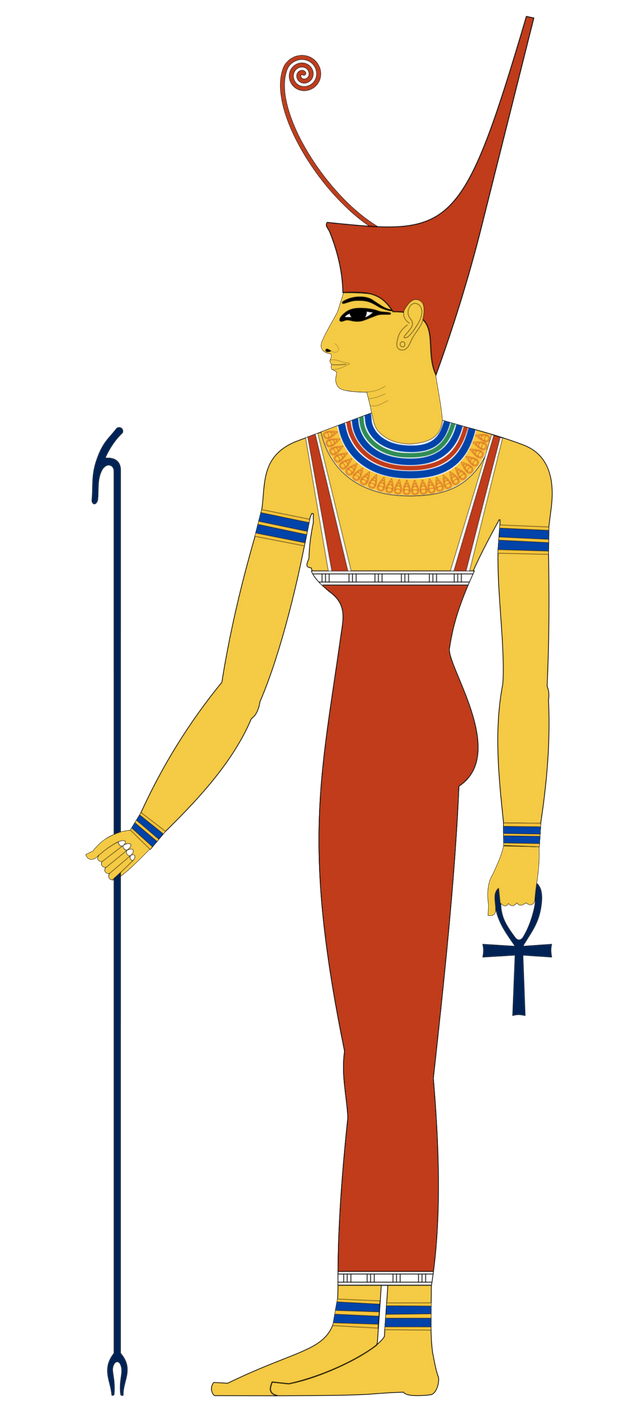
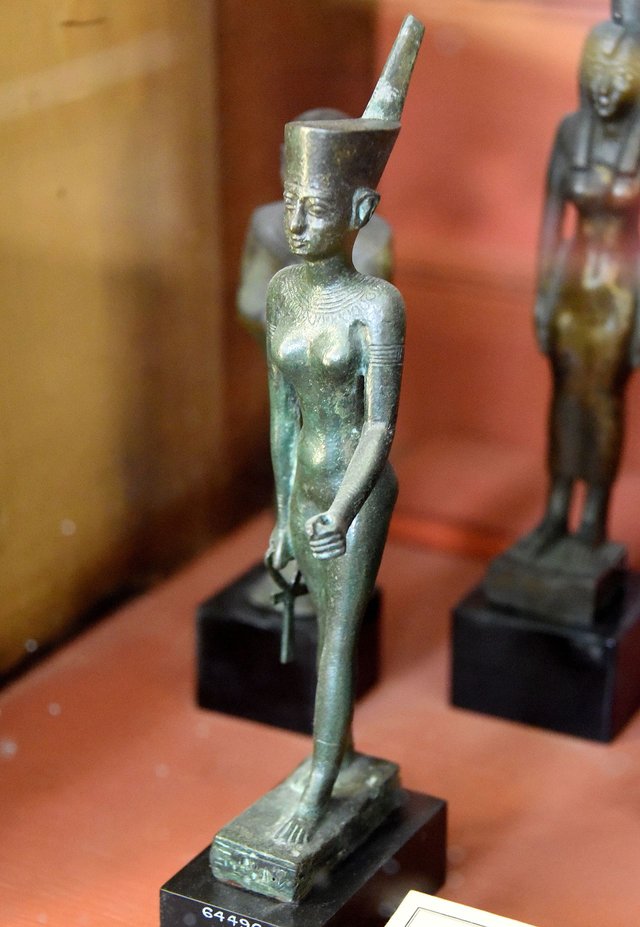
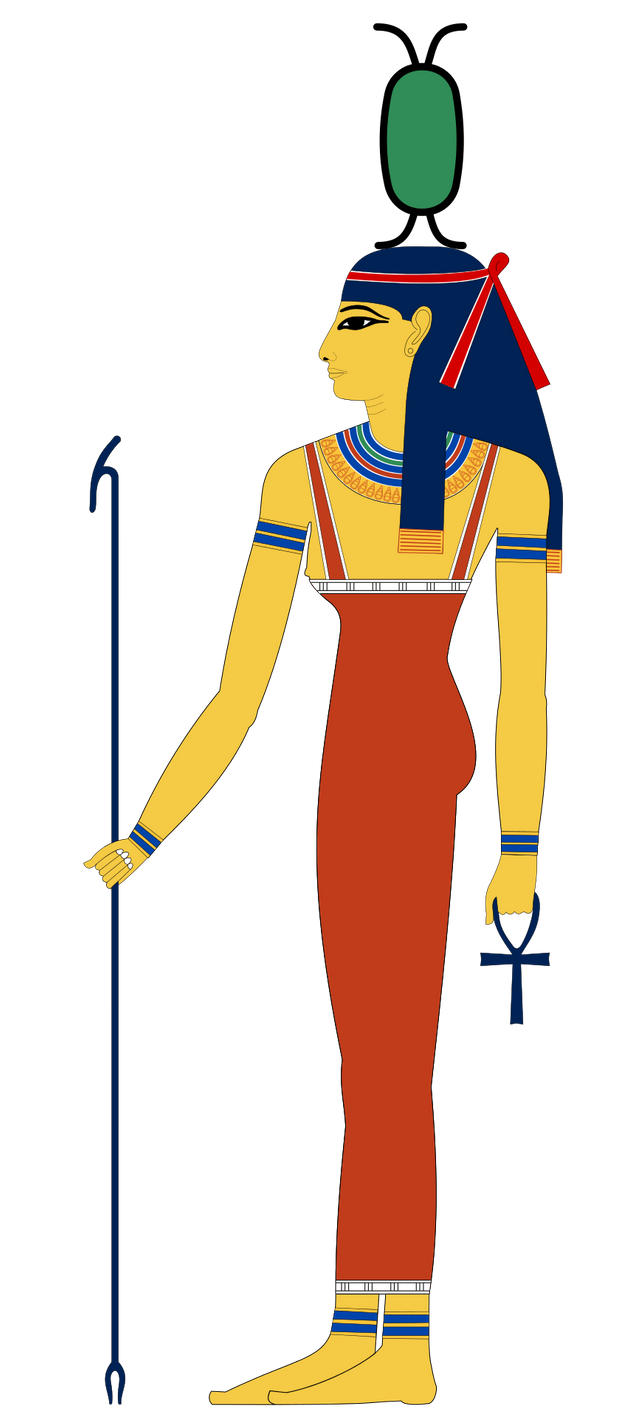
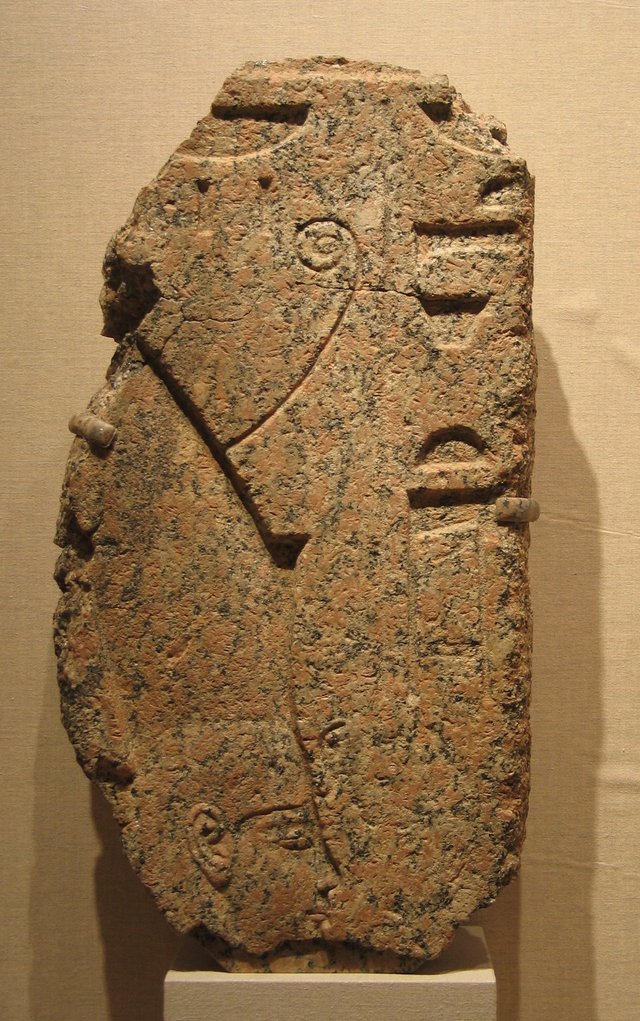
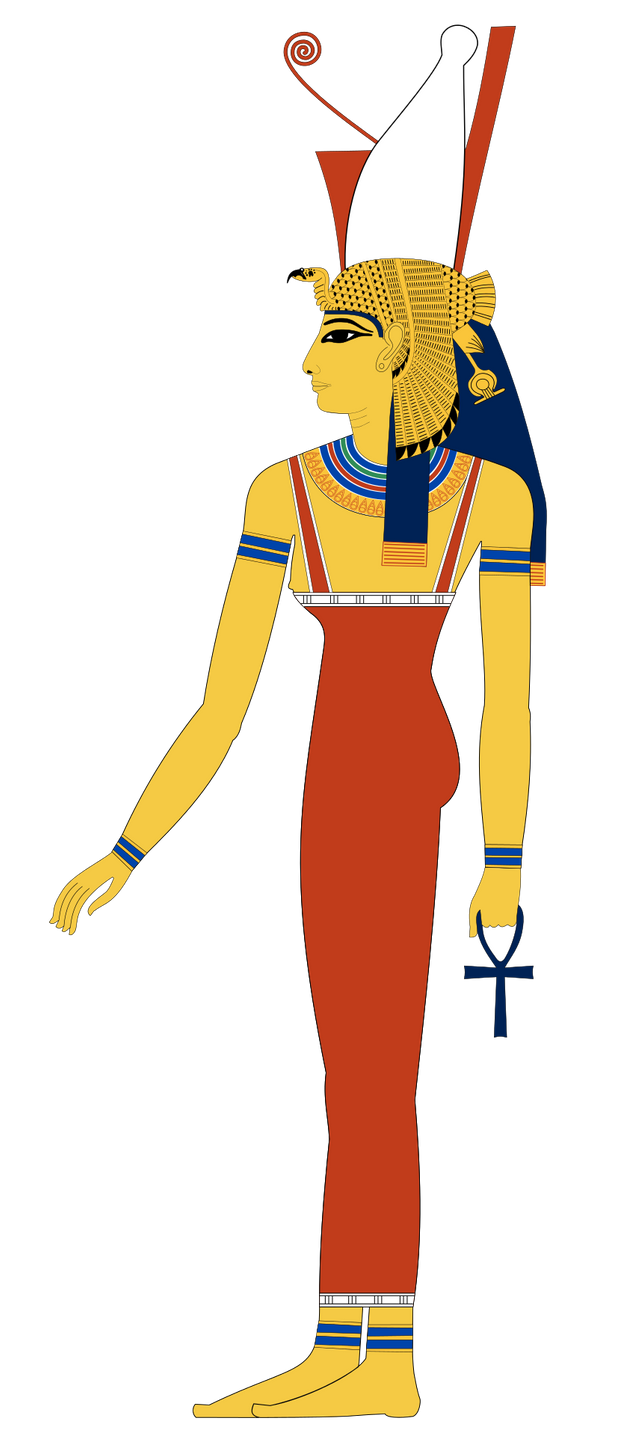
♡
_ \ \ | / / _